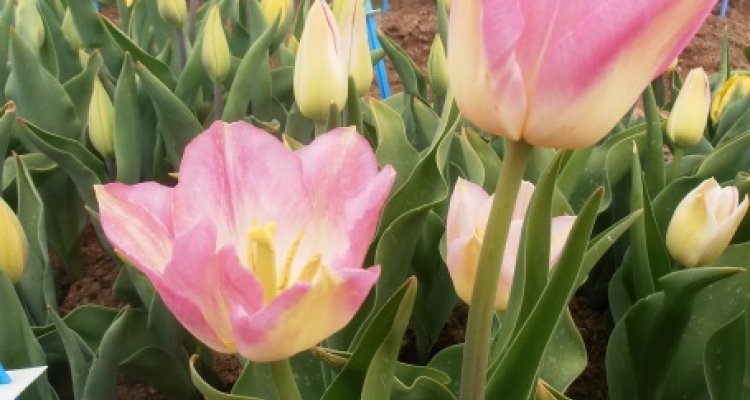
Characterization of the FT/TFL1 family in Tulipa gesneriana
Tulip is one of the most famous ornamental plants associated with the Netherlands. Around the end of March until the beginning of May beautiful fields can be found covered with blooming tulips. But why do you find these fields with tulips mostly only in the Netherlands? That is due to the climate of low temperature during winter and cool springs as the tulips begin to bloom. After blooming tulips go into senescence and temperature will increase over time. The high temperature will trigger the development of the floral bud inside the bulb, which will bloom in the following spring.
So far it is unknown which genes play a role in this trigger given by high temperature. In the model species Arabidopsis thaliana the induction of flowering requires a gene FLOWERING LOCUS T (FT), which encodes a floral activator. FT is part of a family consisting of six members containing all a phosphatidylethanolamine binding (PEBP) domain. Several FT homologs are already identified in other monocot species like Oryza sativa (rice), Hordeum vulgare (barley) and Zea mays (maize).
The aim of this project is to characterize several FT/TFL1 members found in Tulipa gesneriana. Throughout the development of tulip, expression analysis will be performed of the different FT/TFL1 family members. In addition, the putative FT/TFL1 genes will be overexpressed into A. thaliana wild type and ft mutant plants to study the potential role of these genes as floral activator or repressor.
Used Skills
The student will intensively use molecular biology techniques such as RNA extraction, vector ligation, transformation as well as Agrobacterium tumefaciens-mediated transformation and phenotype screening.
General information
The project is suitable for both BSc/HBO and MSc students and preferably for an internship of a period of at least 4 months. Knowledge and/or experience with molecular biology techniques is an advantage as it will be widely used. Depending on the level of experience of the student and the length of the period, the project will also include expression analyses by in-situ hybridizations and/or further bioinformatics analyses of an existing RNA-seq dataset related to tulip flowering time control.